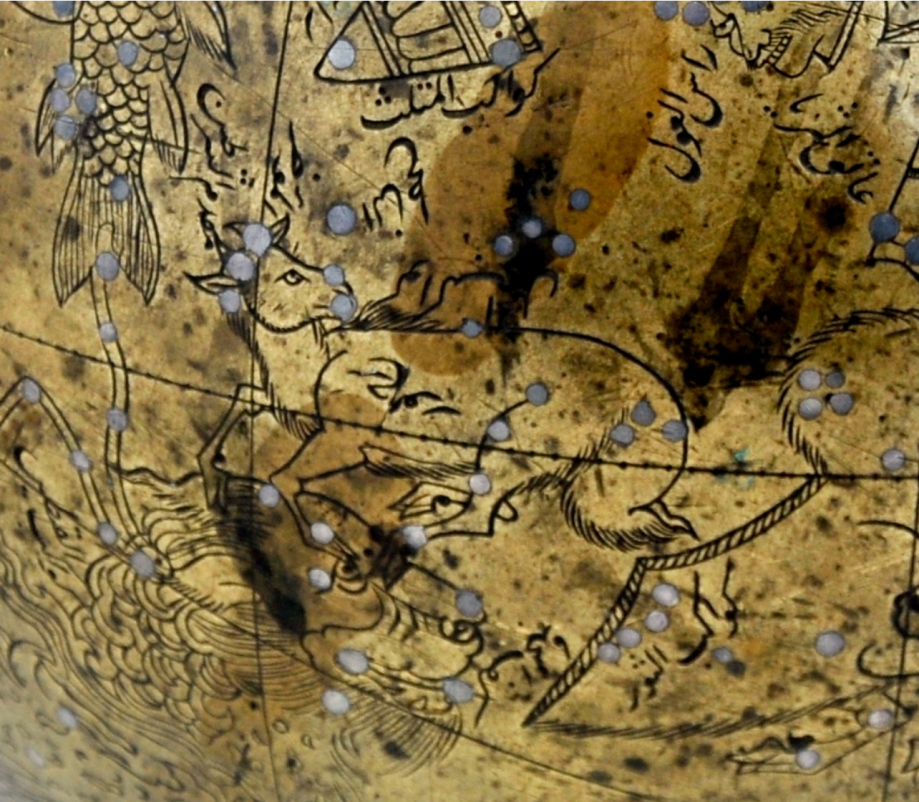
According to Emilie Savage-Smith, Aries (the Ram) is the first of the zodiacal signs, having been at one time the sign in which the vernal equinox occurred. Aratus placed the Ram near Andromeda and the Triangle. This is the legendary Ram that bore the golden fleece, the object of the Argonaut’s quest; it was the Ram that carried Phrixus and Helen through the Hellespont. The Ram was sacrificed to Zeus, who placed it among the heavens, though others say that the ram gave its golden fleece to Phrixus as a memorial and then passed up to the heavens of its own accord. Hyginus adds the story that when Dionysus attacked Africa the army found themselves without water, a ram showed them the way to water, for which reason Dionysus placed the ram in the heavens so that when the sun was in that constellation all living things would be refreshed and so that it would be the chief of all the signs since it had been the best leader of his army.
On the Manuchihr globe the constellation is labeled kawākib al-ḥamal (the constellation of the young ram). The constellation consists of 13 formed stars and 5 unformed ones. Of the unformed, four are in a group over the rump and one is on top the head. Three stars are labeled, all reflecting traditional Arab imagery. Of the two stars very close together in the horns, the one closest to the outside of the horns [β Arietis] is called muqaddam al-sharaṭayn (the anterior one of the two signals). The second star of the pair in the horns [γ Arietis] is labeled al-mu’akhkhar (the posterior) instead for mu’akhkhar al-sharatayn (the posterior of the two signals). The name al-sharaṭayn (the two signals) is the name of the first lunar mansion, which derived originally from these two stars.
The large star at the top of the head, the first of the unformed stars, is labeled al-nāṭiḥ (that which butts or gores). This is α Arietis, whose modern name Hamal derives from the word for ram used for the entire constellation. Al-Ṣūfī used al-nāṭiḥ for a star name, while most of the writers in the Arabic world used it as another name for the first lunar mansion; says Emilie Savage-Smith.